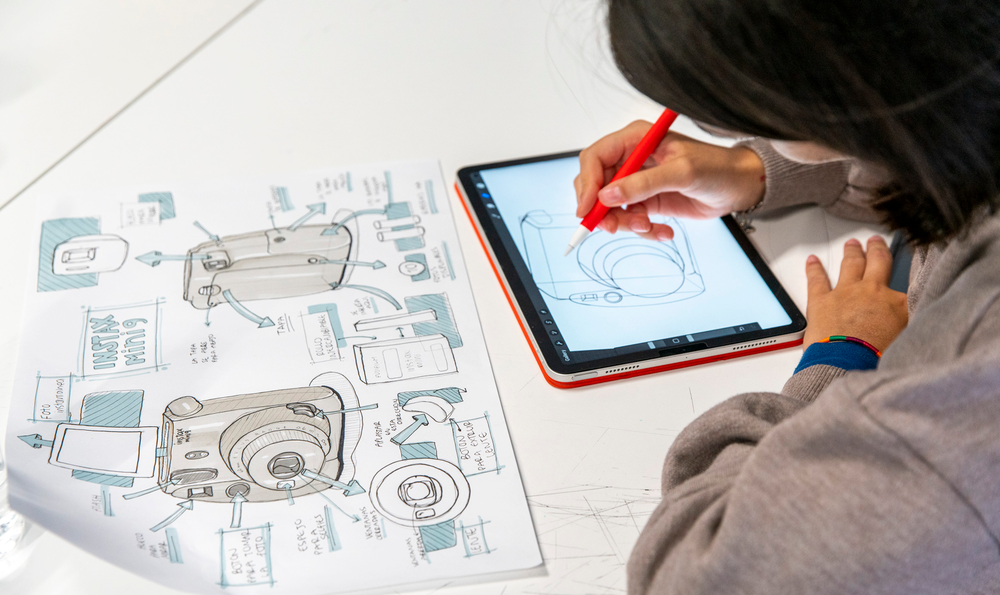Reverse Engineering is a methodological approach to analysing and understanding in detail the structure and functioning of existing objects and products, and it is also fundamental in the field of Design.

Reverse Engineering: unlocking the secrets of design
Date
22 November 2024
What is Reverse Engineering and why it is important in design
Reverse Engineering is the analytical process of deconstructing an object or system to understand its operation, structure and design principles. In the field of design, this approach makes it possible to study successful products in depth, understanding their design choices and using this knowledge as a basis for new creations.
The importance of this technique in design is apparent in several areas: from product design to architecture, from interior design to industrial design. Using this methodology, graphic and product designers can analyse existing solutions, identify strengths and weaknesses, and develop significant innovations based on concrete data and specific, in-depth analyses.
Methodologies and Tools for Reverse Engineering
In the field of design, Reverse Engineering makes use of various methodologies and advanced technological tools that make it possible to analyse and understand every aspect of the product in detail. This process requires a systematic approach and the use of specific technologies to guarantee accurate and reliable results.
The main techniques used in the Reverse Engineering process include:
- Physical analysis, which involves the systematic and documented disassembly of the product to study its components and assembly. This phase helps to understand the structure of the object and, above all, the design choices that led to its manufacture.
- 3D scanning, which uses laser or structured light scanners to create precise digital models of physical objects. This technology is particularly useful for capturing complex shapes and geometries with a high level of detail.
- Material analysis, which includes the in-depth study of the physical, mechanical and chemical characteristics of the materials used. This phase may include strength testing, composition analysis and evaluation of surface properties.
- Photographic documentation, more than just cataloguing, as it includes high-resolution photographs, macro photographs and videos documenting each stage of the disassembly and analysis process.
The technological tools used in Reverse Engineering are constantly evolving and include:
- State-of-the-art 3D scanners offering pinpoint accuracy.
- Advanced CAD modelling software for digital reconstruction.
- Precision measuring instruments such as digital gauges and coordinate-measuring machines (CMMs).
- Specialised software for material analysis and performance simulation.
- Digital microscopes for detailed analysis of surfaces and materials.
The choice of tools and methodologies depends on several factors, including the complexity of the product to be analysed, the level of detail required and the specific objectives of the project. A well-planned approach and the combined use of these technologies enable a complete and accurate understanding of the product, thereby providing a firm basis for the development of new design solutions.
Reverse Engineering as a learning strategy
Reverse Engineering is an effective teaching tool for understanding design principles practically and tangibly. This methodological approach is based on the direct and systematic analysis of existing products, giving students and professionals alike an in-depth understanding of design principles, especially through practical experience.
By studying products that are already on the market in detail, you can understand the design rationale behind their success and identify innovative solutions to common problems. Observing how other designers have tackled and solved specific design challenges also provides the opportunity to gain new perspectives and expand our own range of technical and aesthetic solutions while developing our critical thinking.
The practical side of Reverse Engineering includes disassembly, analysis and reconstruction phases and offers direct experience with materials, technologies and production processes, which is essential to train professionals capable of translating their ideas into tangible and functional products.
Practical Applications of Reverse Engineering
In contemporary design, Reverse Engineering has applications in a wide range of contexts. For instance, in product design, it is used to analyse and improve existing products, while in industrial design it is used to optimise production processes and develop new technical solutions.
In the field of architecture, this technique is fundamental for the conservation and restoration of historic buildings, allowing construction details to be documented and reproduced with extreme precision. Whereas in interior design, it helps to gain an understanding of the ergonomics and functionality of furniture and furnishings, guiding the development of new, more efficient solutions.
The versatility of Reverse Engineering and its capacity to provide valuable insights into so many areas of design make it an indispensable tool for innovation and progress in the creative sector. And it is precisely via this methodical and analytical approach that designers can develop innovative solutions tailored to the challenges of the future.
Ethics and legal considerations in Reverse Engineering
The application of Reverse Engineering requires special attention to be paid to the ethical and legal aspects of the practice. It is essential to operate in full respect of intellectual property rights and current patent and copyright laws, considering that the rights of third parties could be infringed if this technique is not applied correctly.
A professional approach to Reverse Engineering involves several mandatory steps, including:
- · obtaining the necessary authorisations in advance,
- · documenting each step of the process in detail,
- · ensuring ethical and legal use of the information collected,
- · strictly adhering to non-disclosure and confidentiality agreements.
Only by adopting these measures is it possible to practice Reverse Engineering correctly and professionally.
Through IED design courses, students have the opportunity to learn and experience Reverse Engineering as an integral part of their education. In fact, this methodological approach represents a key tool for the development of comprehensive professional skills, allowing for an understanding not only of the technical, but also of the ethical and legal aspects of the discipline.








